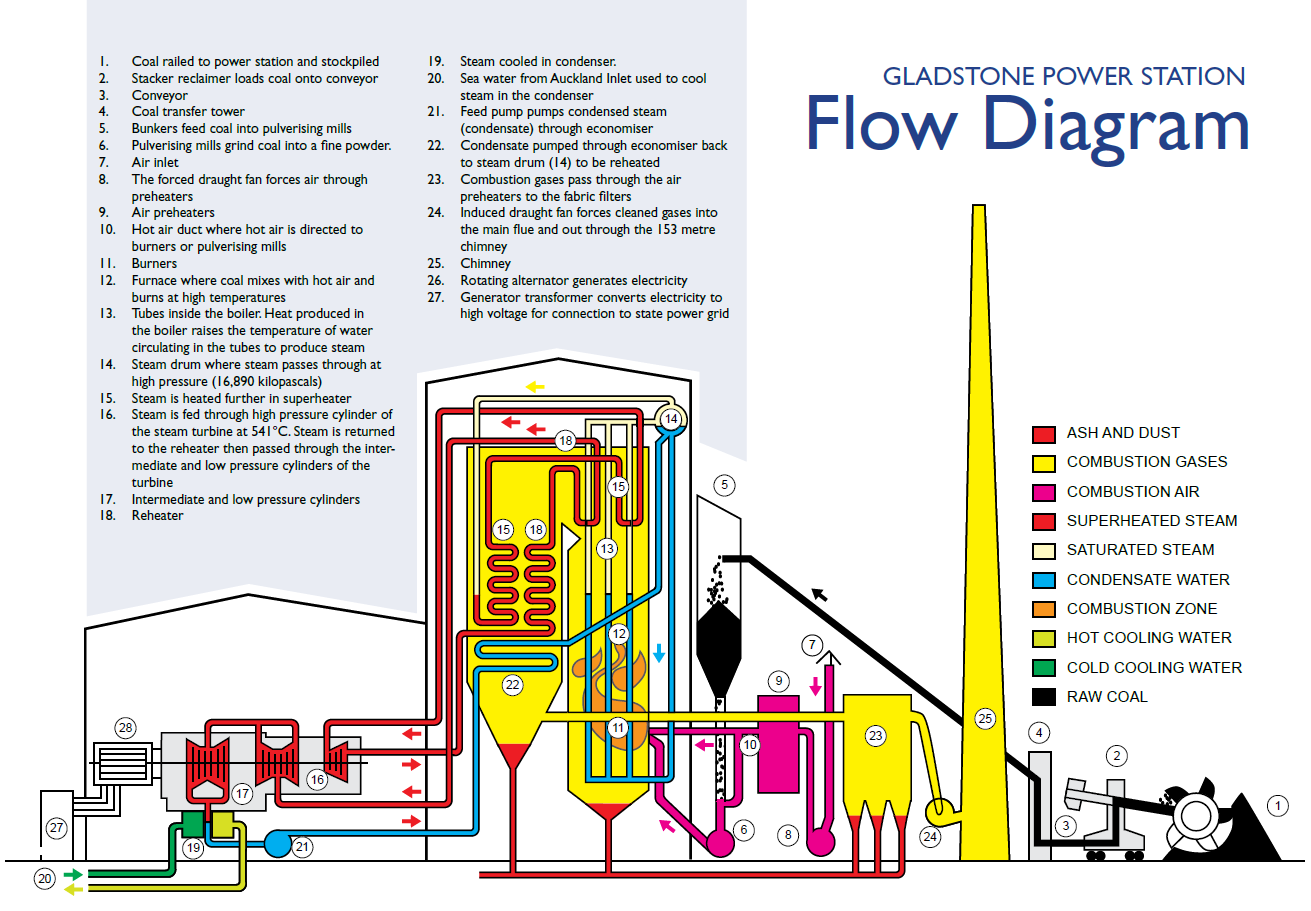|
Gladstone Power Station is Queensland’s largest, with a generating capacity of 1,680 megawatts. The Station was sited near Auckland Inlet to take advantage of seawater for cooling and to be near Central Queensland’s vast coal reserves. The station’s six, 280 megawatt turbogenerators each produce an output of 16,200 volts to transformers that convert the power to a level suitable for transmission at 132,000 or 275,000 volts. Coal is stockpiled after unloading, then reclaimed from the stockpiles by two stacker reclaimers at a rate of 800 tonnes an hour, or via a covered slot bunker system that provides dry coal storage for extended operation in wet weather. Sufficient coal is stockpiled on site to run the station at maximum output for several weeks. The station requires 245 million litres of cooling water every hour—enough to fill the Gladstone swimming pool every thirty seconds. Saltwater pumped from Auckland Inlet passes through the station’s condensers to condense spent steam to water for repeated use in the boilers. The cooling water is discharged into the Calliope River. Environmental monitoring measures all NRG outputs for water and air to ensure compliance with guidelines and licence limits. The 153 metre chimney stacks provide a natural draught that assists in the removal of the boiler flue gas. The flue gas that comes out of the chimney stacks is first cleaned to remove any ash and dust particles that might be carried with it. This is done by fabric filters with 7,500 fabric filter bags fitted in each bag house. The ash and dust collected in the hoppers is pneumatically conveyed to bunded areas across from the station where land is being reclaimed for further industrial development. Some ash is recycled in cement products, ensuring less landfill. The station’s six boilers are each fed by six pulverisers with each boiler capable of producing 900 tonnes of steam an hour at 16 890 kilopascals and a temperature of 540°C. The boiler consists of a large number of tubes extending the full 60 metre height of the structure and the heat produced raised the temperature of the water circulating in them to create steam which passes to a steam drum at the top of the boiler. The steam is heated further in the superheater and then fed through to a high pressure cylinder of the turbine. The steam turbine converts steam energy to mechanical energy in the form of a turning rotor. The mechanical energy is converted to electrical energy in the generator. When the steam has been through the first stage (high pressure) of the turbine, it is then reheated before being passed through the final two stages of the turbine. Gladstone Power Station’s complex operations are controlled by modern computer systems allowing all operations to be monitored in a single control room. Each of the station’s six generating units has been designed with high dynamic response to enable the unit to change load quickly. |
